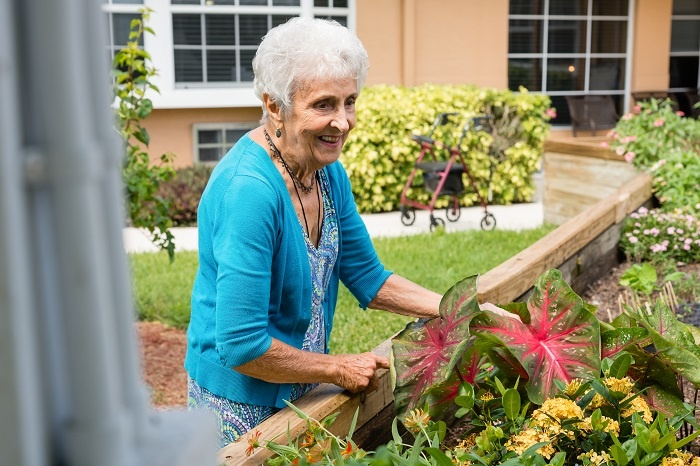
If you are looking for a Naples, FL memory care community for your loved one, there are many things you need to first consider. Memory care communities may provide different programs and features that make them a better fit for your loved one than others. One of the features you need to consider is the type of activities program the community has.
In this blog post, we will be discussing how to evaluate a memory care community’s activities program to make sure it is the right fit for your loved one.
Staff to Resident Ratio
In a memory care community, there are usually certain members of staff who are in charge of the activities program. When evaluating these programs, you want to make sure there is a good staff-to-resident ratio. Having enough staff members to manage the program ensures everything runs smoothly and the residents have a good experience.
An important aspect of a well-rounded activities program is having one-on-one connections. That is why you want to make sure the program has enough staff involved so that they can interact with each individual resident.
Difficulty Level
In a Naples, FL, memory care community, there are a variety of residents at different levels of memory loss. Some may have standard memory loss associated with aging, while others may have more extensive memory loss related to Alzheimer’s or dementia. Because of this, you want to make sure the activities program reflects this and has different activities for all cognitive levels.
The activities program should include options for those with minimal memory loss and those with more extensive memory loss. This ensures everyone is involved and can benefit from these activities even if they require more assistance.
Mind and Body Focus
There are many reasons why a memory care community should have an active activities program in place. One of the reasons is that this is meant to engage the mind and body, helping those with extensive memory loss.
Memory care activities should help stimulate the mind and the body by offering different complexities and activities. For instance, some activities involve critical thinking as well as physically moving or touching certain items. An example of this is creating music where the residents focus on the beat as well as mimicking it with their instruments.
Available Options
Because residents in a memory care community have such different needs, the community must provide different options for activities. Not everyone will be engaged in certain activities or the difficulty level may not be suitable for them. That is why you want to find an activities program that has multiple options that provide easier personalization.
Some activity programs may have more complex games and exercises to get the residents engaged and excited. But they may also have more laid-back activities for those of any cognitive level, such as folding laundry, singing, or painting.
Social Engagement
A key feature a memory care community needs to provide is social engagement for those who may otherwise become isolated. The activities program should have a strong focus on social engagement, which helps to create a stronger community.
As important as one-on-one care is, it’s also vital that the activities program engages multiple residents at a time. This creates a stronger connection between residents and creates a more fulfilling experience as everyone interacts with one another.
You should also see if any of the activities provide room for family involvement. You may want to get involved in your loved ones' care, and doing certain activities with them is a great way of getting closer and spending valuable time with them.
Types of Activities Memory Care Communities Should Have
Now that you know what to look for in a memory care community activities program, what kinds of activities should be available? This is also something you want to look into to make sure your loved one is getting the physical and mental stimulation they need.
Physical Activities
There should be plenty of activities that encourage physical movement to help seniors maintain bodily health. This could include activities like fitness programs, walks, stretching, and dancing.
Sensory Activities
Memory care should also include a range of sensory activities for each resident. Sensory activities help to engage their mind and even stimulate better memory when practiced regularly. The community should provide sensory activities perfect for all levels of memory loss. Options for sensory activities can include flower arranging, sorting, painting, folding laundry, and untying knots.
For those with more extensive memory loss, more therapeutic activities may also be available. Some examples of this include things like doll therapy, music therapy, and making memory boxes.
Life Skill Activities
Maintaining certain life skills is beneficial for memory care as it can help slow the progression of memory loss. Life skills also give residents a purpose, improving their mental health and giving them a better quality of life.
Life skills can include things like tidying, folding laundry, scrapbooking, organizing items, and certain crafts. These repetitive motions are very beneficial and provide an activity that does not require too much cognitive concentration.
Finding a Safe and Comfortable Community
Picking out the right memory care community for your loved one is vital since you want to make sure everything they need will be provided. One feature to consider is the type of activities program available as this will have a key role in your loved ones' care.
This program needs to be both physically and mentally stimulating, helping to keep your loved one active to slow the progression of their memory loss.
To find more information on finding the right community for your loved one, check out this guide on Finding a Safe and Comfortable Senior Living Community.
